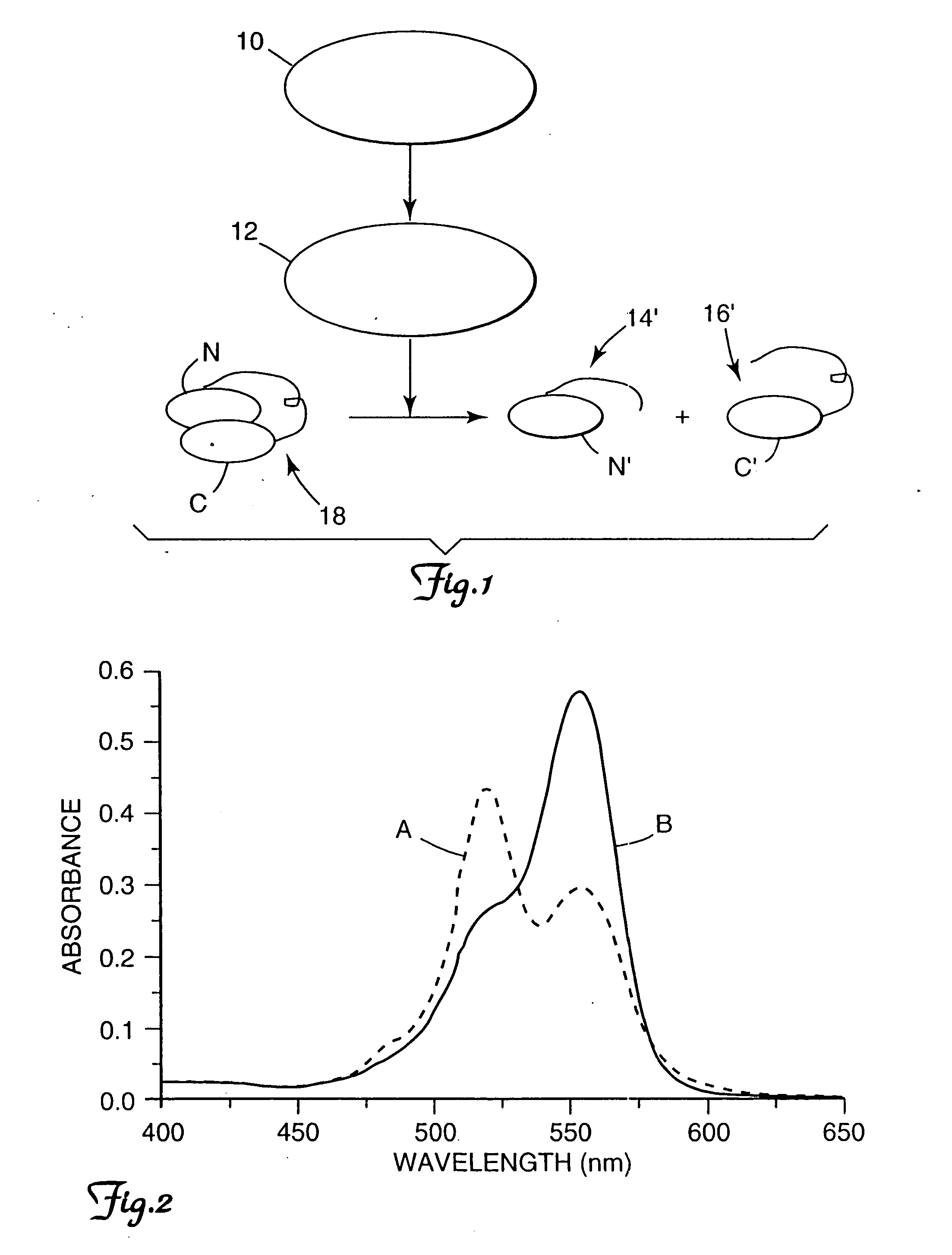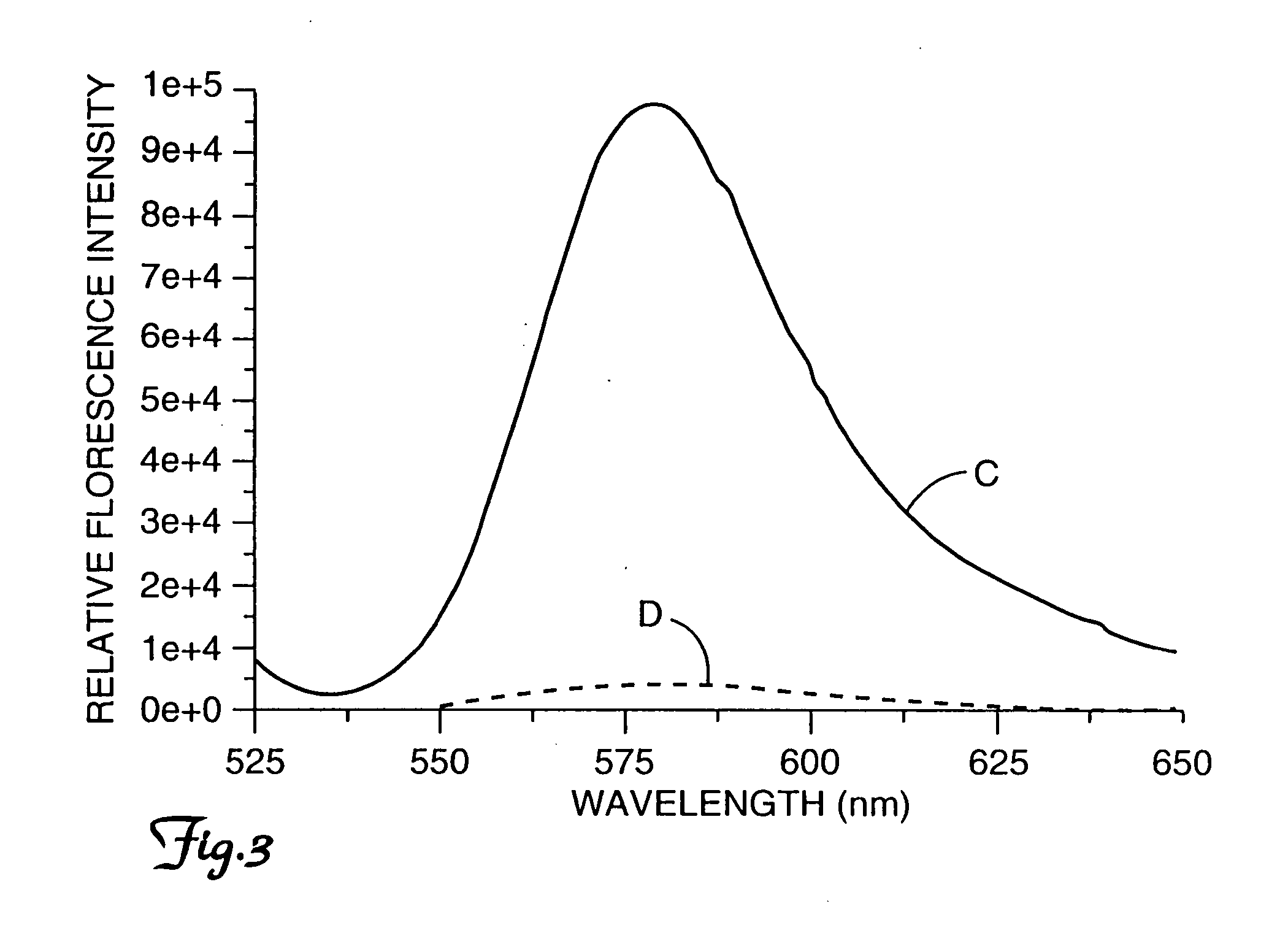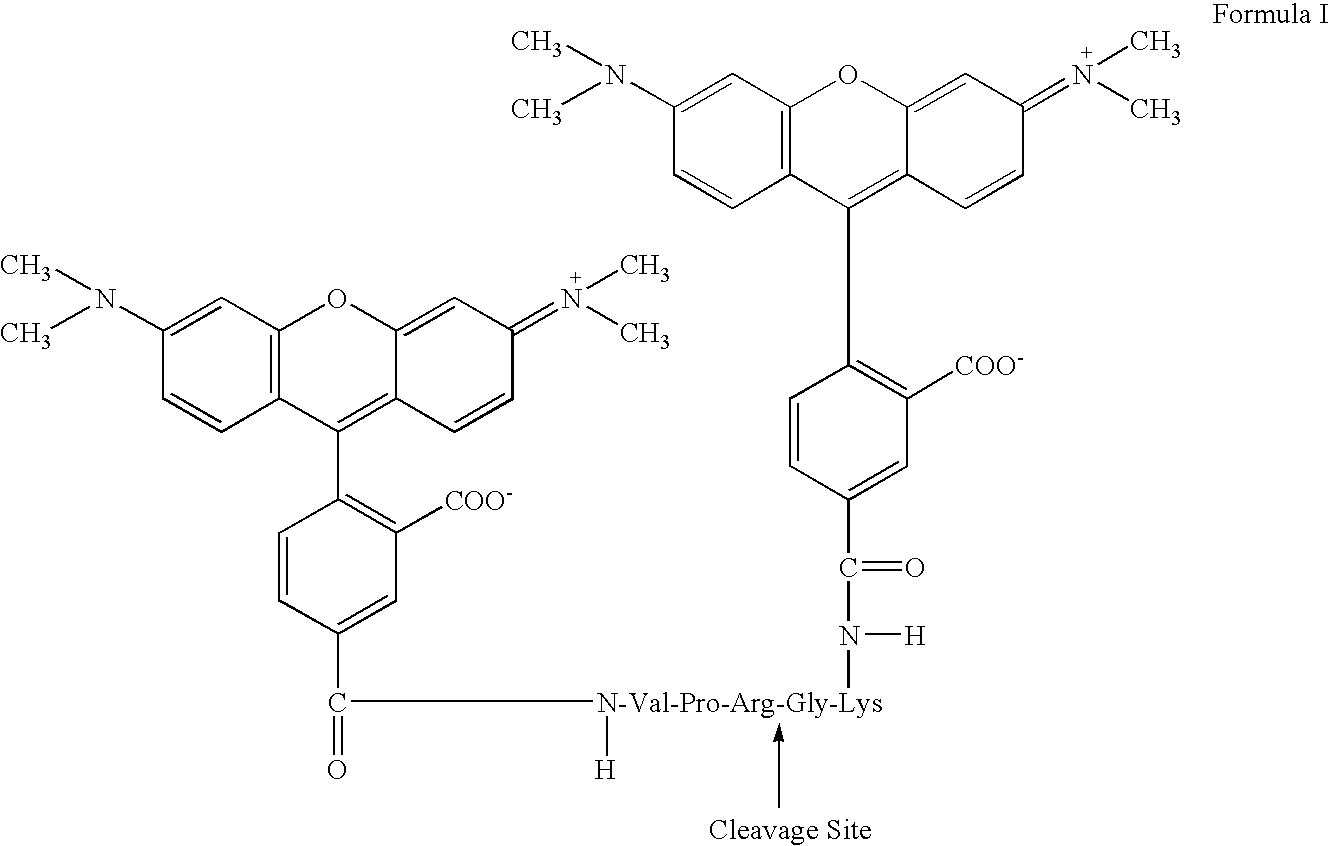Fluorogenic protease substrates based on dye-dimerization
a technology of fluorogenic protease and substrate, which is applied in the direction of instruments, peptides/protein ingredients, peptides, etc., can solve the problems of slow and expensive operation, serious health and safety problems in the management of microbial risks in healthcare, cosmetics, food and beverage industries, etc., and achieves rapid and convenient homogeneous approach, improved accuracy, and faster detection
- Summary
- Abstract
- Description
- Claims
- Application Information
AI Technical Summary
Benefits of technology
Problems solved by technology
Method used
Image
Examples
example 1
Preparation of Fluorogenic Protease Substrates
[0073] SEQ ID NO. 1 Val-Pro-Arg-Gly-Lys was synthesized by GeneMed Biotechnologies (South San Francisco, Calif.) and purified on reverse phase high performance liquid chromatography (HPLC). Its chemical identity was confirmed by Fast Atom Bombardment (FAB) mass spectroscopy and amino acid analysis. The peptide was reacted overnight with tetramethylrhodamine succimidyl ester in 0.1M sodium bicarbonate, pH 8.3. The reaction mixture was purified on reversed phase HPLC (C-18 column, particle size 15 μm, Waters Corp., Milford, Mass.). All chemically reactive dyes were purchased from Molecular Probes, Eugene, Oreg. The dye-peptide conjugate had the chemical structure of SEQ ID NO. 2 TMR-Val-Pro-Arg-Gly-Lys-TMR (designated T-VPRGK-T in FIG. 2) as shown in Formula I, below. A composite gradient of acetonitrile (ACN) in water was used to purify this conjugate. In a typical elution, the acetonitrile content was increased from 15% to 30% during t...
example 2
Hydrolysis of Fluorogenic Protease Substrates by Purified Enzymes
[0074] Enzymatic hydrolysis of the substrate from Example 1 was carried out in 50 mM carbonate buffer, pH 8.9 at room temperature. Fluorescence intensity of the solution prior to treatment with trypsin and after treatment with trypsin is shown in Table 1, for excitation wavelengths of 360 nm, 522 nm, 530 nm, and 553 nm, respectively. Besides increase in fluorescence intensity, changes in absorption spectra were also observed, as shown in FIG. 2. When intact, the conjugate had an absorption maxima at 520 nm with a shoulder at 550 nm (tracing A). This is a characteristic of dye dimerization or stacking, as described above. Cleavage resulted in reversal of the relative absorbance of the two peaks, reverting to the spectra of free tetramethyl rhodamine in aqueous solution (tracing B). Both the fluorescence and absorption results provided convincing evidence that ground-state interactions existed between dye molecules in ...
example 3
Use of Fluorogenic Protease Substrates to Detect Vibrio Paraeamolyticus
[0076]Vibrio parahaemolyticus used in these experiments was a quality control strain for the Transport Swab System of Becton Dickinson Microbiology Systems (Cockeysville, Md.). It was purchased from American Tissue Culture Collection (ATCC accession no. 49398). Cells were grown at 37° C. in nutrient broth with 3 percent sodium chloride. Ten ml of overnight culture was centrifuged. Broth was disposed and 3 ml of assay buffer added (1 mM EDTA, 50 mM phosphate buffer at pH 7.2) containing 50 μl of dual labeled conjugate of formula I, 1000 dilution (see Example 1, procedure for making labeled peptide). To ensure complete cleavage the reaction mixture was incubated overnight. Fluorescence intensity of cuvettes with and without cells was measured, (tracings C and D, respectively). The resulting spectra are shown in FIG. 3.
[0077] Cleavage by the trypsin-like enzyme produced an increase in fluorescence. This assay pro...
PUM
| Property | Measurement | Unit |
|---|---|---|
| distance | aaaaa | aaaaa |
| concentrations | aaaaa | aaaaa |
| wavelength | aaaaa | aaaaa |
Abstract
Description
Claims
Application Information
 Login to View More
Login to View More - R&D
- Intellectual Property
- Life Sciences
- Materials
- Tech Scout
- Unparalleled Data Quality
- Higher Quality Content
- 60% Fewer Hallucinations
Browse by: Latest US Patents, China's latest patents, Technical Efficacy Thesaurus, Application Domain, Technology Topic, Popular Technical Reports.
© 2025 PatSnap. All rights reserved.Legal|Privacy policy|Modern Slavery Act Transparency Statement|Sitemap|About US| Contact US: help@patsnap.com



